Pilates is a method of exercise to inspire graceful movements by enhancing core strength. Mat Pilates incorporates body-weight movements to develop core strength, flexibility, awareness and breath control. In addition, Pilates instructs awareness of spinal alignment as well as deep core muscle recruitment to execute efficiency, strength and stability.
The main six Pilates principles are: centering, concentration, control, precision, breath and flow. Therefore, Pilate exercises balance muscular contraction, movement and deep breathing. The Pilates breath is essential for movement execution and core contraction. The style of breathing varies among every Pilates philosophy, but typically the inhalation is taken through the nose and the exhalation is released through pursed lips. It is ideal to inflate the diaphragm, which shifts the breath into a “three dimensional” movement into the ribs. Thus, the ribs move up and down, laterally, and front and back, similar to expanding a balloon.
This Pilates mat routine combines traditional and Pilates-inspired movements to strengthen and tone lower, upper and core musculature. Complete one to three sets of each exercise.
Side Plank Rotation With Leg Lift
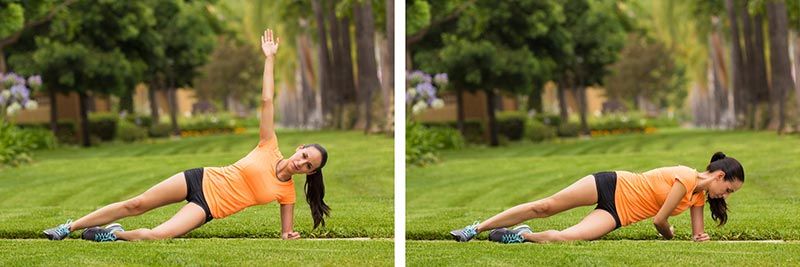
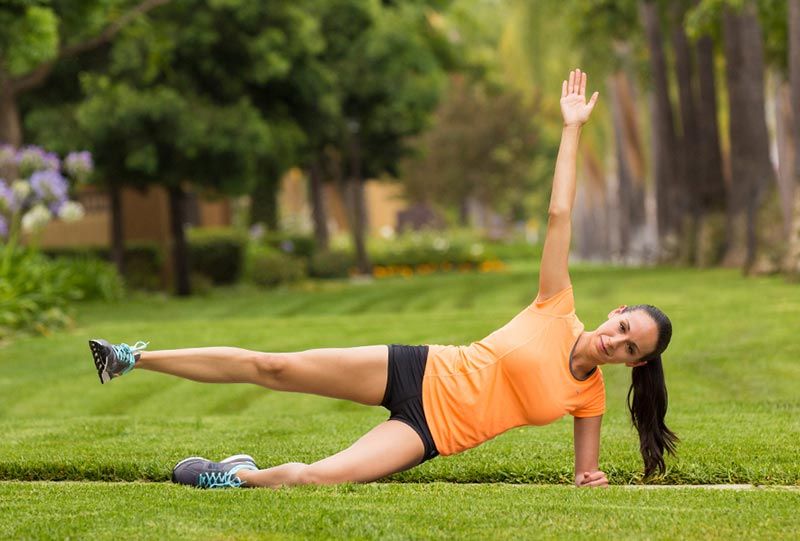
This movement combines a traditional side plank and side leg lift exercise to increase shoulder blade stability, core strength, thoracic mobility and hip strength.
How to Perform: Lie on your side and assume a side plank on your forearm with your bottom knee bent at 90-degrees. (To increase the challenge, position the body into a full side plank.) Reach the top arm above the shoulder. Exhale, rotate the chest and sweep the top arm under the rib cage. Inhale and return to center. Exhale and lift the top leg off the floor to where the foot is level with the hip. Inhale and return the leg to center. Repeat for six to 10 reps and switch to the other side.
Plié Squat to Yoga Tree Pose
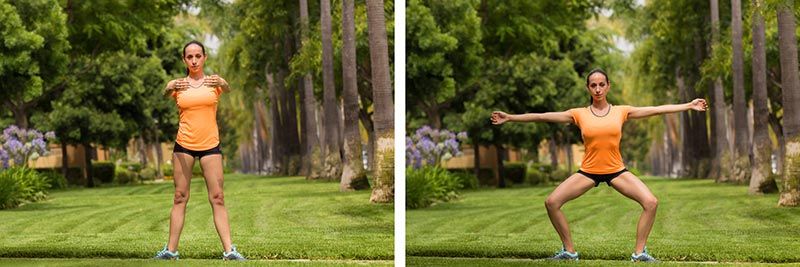
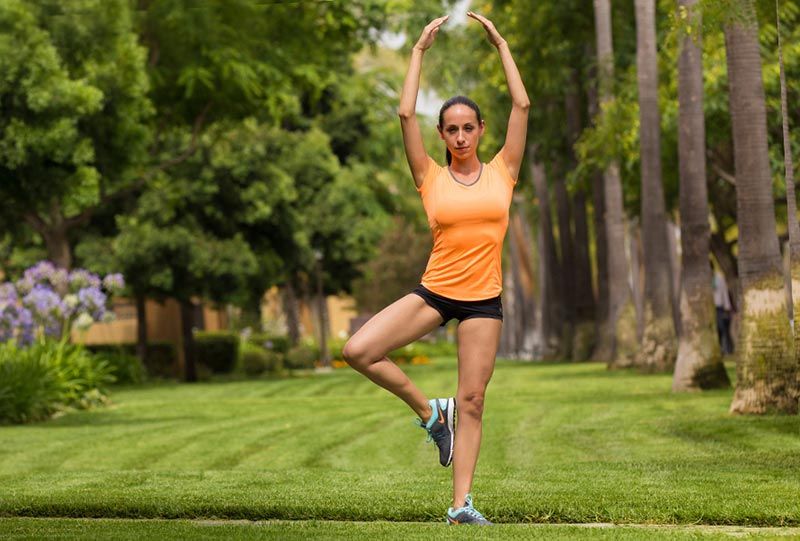
This movement integrates a traditional plié squat that moves into the common yoga tree pose. The plié strengthens the lower body and the transition to tree pose challenges balance, while the inner and outer thigh of the stance leg helps stabilize the pelvis.
How to Perform: Stand tall with feet hip-distance apart and arms extended in front of the shoulders. Slightly externally rotate the hips to where the feet move away from facing forward approximately one inch. Step your right foot away and lower the legs into a plié squat while opening the arms wide away from the body’s center. Exhale and lift your body upward while lifting the arms overhead and placing the right foot on the left calf. Hold for one to three seconds and continue the squat to tree motion. Complete six to 10 repetitions on the right side and then switch to the left leg.
Plank With Leg Lift
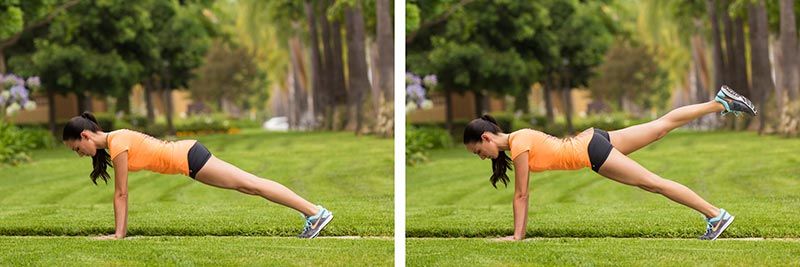
This pose increases upper-body strength, shoulder blade stability, hip mobility and core and gluteal strength.
How to Perform: Position the body into a full plank on the hands and with the feet together. Draw in the core and imagine the hands are pushing away from the floor. Point the right toe and lift the leg upward toward hip height, contracting the gluteals. Return the leg to center and repeat for six to eight repetitions. Repeat on the left leg.
Supine Crescent Moons
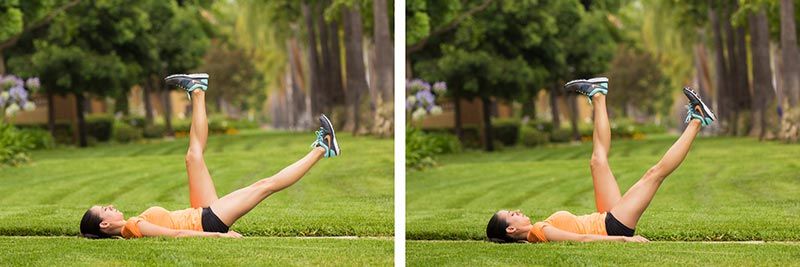

This movement increases hip mobility and core strength.
How to Perform: Lie on your back and lift the legs over the hips. Maintain a neutral spine as the core musculature is engaged and “drawn in.” Lower your right leg about one to two feet (this is your starting position). With each leg, draw a crescent moon shape (the right leg draws from the bottom up, and the left leg draws from the top down to start). Continue to draw the moon shape; thus, if imagining a clock around the legs, the right leg continues to glide from 6, 3 to 12 o’clock and then 12, 3 and 6 o’clock. The left draws from 12, 9 to 6 o’clock and then 6, 9 to 12 o’clock, respectively. Exhale the breath when drawing the curve of the moon.
Complete six to 10 crescent moon shapes. *Note the farther the legs are from the hips, the more challenging the pose, especially for core stabilization. Keeping the toes directly over the hips decreases the challenge.
Double Legged Helicopters
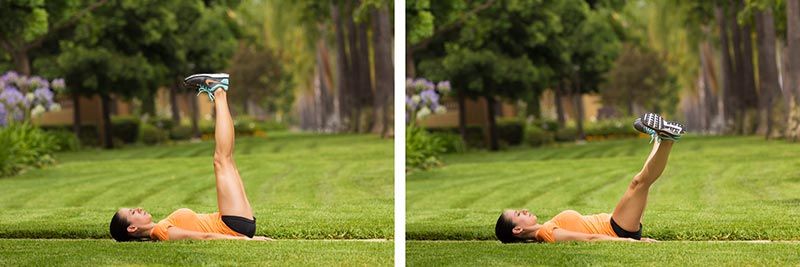

This core exercise increases core and hip strength while focusing on the simultaneous movement of the legs and hips.
How to Perform: Lie on your back and bring the legs straight above the hips with the feet together. Bring the toes to level with your head, or eyes, (to make the move more challenging, lift the pelvis off the ground as if you were doing a reverse hip curl). Start to split the legs apart to draw what seems like the curve of a capital D (roll the pelvis back on the floor here if you have lifted it). Bring the toes back together and continue drawing this “Capital D” movement with your feet. Exhale as you split the legs to draw the curved motion. Complete six to 10 repetitions. *Note the farther the legs meet away from the hips, the more challenging for the core, but the goal is to execute strength rather than try to make as big a range of motion as possible.
Moving Cobras
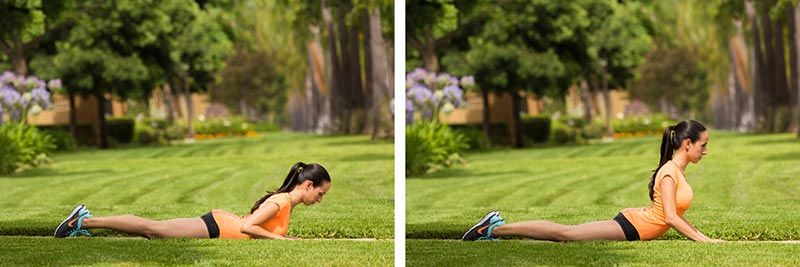
Moving cobras help tone the triceps while increasing the strength of the back extensor muscles.
How to Perform: Lie on your stomach and place both hands underneath (or several inches in front of) the shoulders. Keep the top of the feet flat on the ground and elbows tucked into the side body. Inhale and lift and extend the spine off the ground while pulling the shoulder blades down the spine. Keep your eye gaze forward. Exhale and lower the torso onto the ground. Continue to use the triceps to assist the lifting and lowering motion. Complete six to 10 repetitions.




 by
by 








 by
by